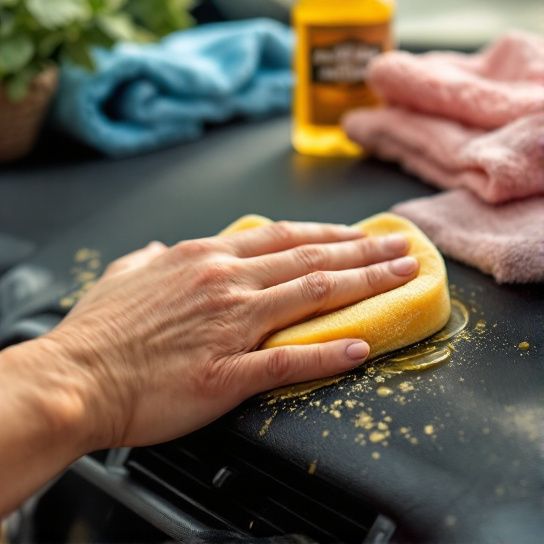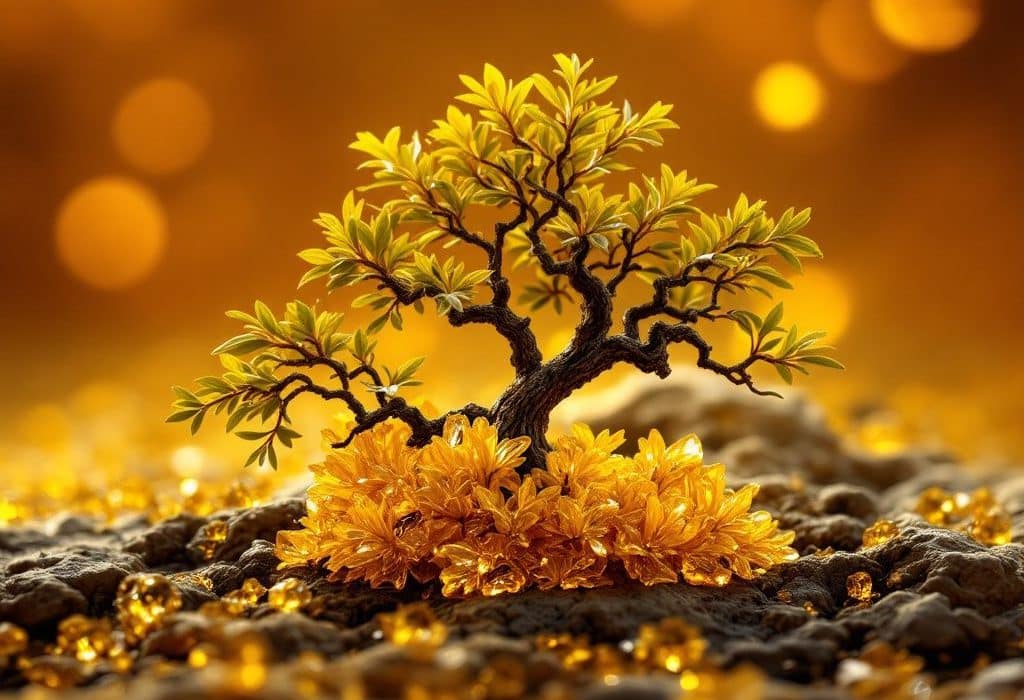Have you ever found yourself searching for that secret answer to elevate your beauty regimen? You know, the kind of discovery that feels almost sacred, whispered about in beauty circles like some ancient treasure? Well, my friend, let me introduce you to one of the absolute gems of natural beauty products—Frankincense essential oil. I like to think of it as the ultimate beauty secret. Known through ages for its rejuvenating properties and complex scent, it’s like having a beauty miracle bottled up. Trust me, once you get to know it, you’re going to wonder how you ever lived without it.
What Makes Frankincense So Special?
Before we dive into the myriad of ways you can use Frankincense in your beauty routine, it’s important to grasp what makes this oil a standout. Frankincense isn’t just your everyday oil. It’s the sacred kind, hailed since ancient times for its skin-healing properties. Its powerful history is steeped in spirituality and ceremony, traditionally burned as incense during religious rituals. But it’s more than just the aroma. The real magic of Frankincense lies in its ability to transform your skin into its healthiest state.
Frankincense’s Skin-Enhancing Properties
One of the reasons you’ll love Frankincense is its anti-aging prowess. This marvel is known for its ability to promote cell regeneration. Picture this—smoother skin, less noticeable scars, and fading fine lines. All thanks to this sacred oil. Another charm? It’s a mighty cleanser. Frankincense gently tones and cleanses the skin, minimizing blemishes without stripping away its natural oils.
Embracing Frankincense in Your Daily Routine
Ready to dive in? Here are solid ways you can incorporate this sacred oil into your beauty regime.
1. Frankincense as a Facial Serum

Highly recommended if you’re venturing into ncense oil wit products for the first time. Create a custom facial serum by mixing two drops of Frankincense oil with your carrier oil of choice. Personally, I love jojoba or sweet almond oil for their lightweight feel. Every night, gently massage it onto your face. You’ll notice the nurturing hug of the oil; it almost feels like a spa moment you can cherish daily.
2. Add it to Your Moisturizer
Already have a moisturizer you love, but curious about the sacred oil’s power boost? Mix two to three drops of Frankincense with your existing facial or body moisturizer. Do this especially if your skin is feeling lackluster or in need of a fresh start.
3. Spot Treatment for Scars or Blemishes
This little trick has been a game-changer for many. Apply a concentrated solution of Frankincense directly onto your scars or blemishes. It’s like precision warfare against uneven skin. A couple of weeks in, and it’s hard to ignore the improvement.
Perfecting Your Natural Skin Regimen
Frankincense aligns seamlessly with a host of other natural beauty products, enhancing the efficacy of your routine without overwhelming it. A few pointers based on how I do it:
Pairing Frankincense with Other Essential Oils
Some folks love pairing Frankincense with Lavender or Tea Tree oils for an added layer of skin support. Want to soothe your skin after a long day under the sun? Lavender will be your knight in shining armor. Complementing Tea Tree gives you an antibacterial punch, ideal for those pesky breakouts.
Make Your Own Essential Oil Blend

Why not experiment a bit? Let your inner alchemist shine by creating a blend that caters to your skin’s needs. Combine Frankincense with Rosehip oil for an even higher level of hydration—something your skin definitely deserves. Always remember to do a patch test beforehand when trying new blends.
Common Mistakes to Avoid
We’re human, and trial and error is part of the fun, but let me save you some hassle with these simple tips:
- Too Much Oil: Frankincense is potent. A little goes a long way! Avoid drenching your face. Strive for moderation to allow your skin to breathe and effectively absorb its goodness.
- Direct Sunlight Applicability: Although beneficial, using Frankincense oil before sun exposure may sometimes irritate. Best practice is to apply at night or use sunscreen during the day.
- Mixing with Harsh Chemicals: We love multi-tasking, but avoid combining Frankincense with products containing harsh acids or retinols in the same application. The goal is to nourish, not overwhelm, your skin.
Frankincense and Emotional Well-Being
Frankincense doesn’t just fall under the natural beauty products list; its impact extends beyond the surface. Stress and skin health often go hand in hand, a cycle we’d love to keep under control.
Aromatherapy for Skin Health

Using Frankincense in a diffuser can be a rejuvenating experience. The aroma encourages relaxation, helping reduce stress—a known culprit for breakouts and aging. Light some candles, pull out a cozy chair, and just breathe. Sometimes self-care isn’t about the products but the experience they provide.
Gratitude Rituals
A small-lived beauty ritual is drawing upon a quiet moment of thankfulness, massaging in your sacred Frankincense-infused concoction while silently listing what you are grateful for that day.
Is Frankincense Suitable for All?
Whether your skin is delightfully hydrated or craving moisture like a desert, Frankincense can adjust to various skin woes when used appropriately. However, it is crucial to note if you have sensitive skin or are hesitant about essential oils, do perform a patch test under your arm before committing to a new ritual.
Wrapping Up the Frankincense Journey
With its enchanting scent, unmatched abilities, and historical significance, Frankincense positions itself as a cornerstone of natural beauty products. Consider this sacred oil a cherished ally in your pursuit of beauty—the loyal companion who knows just what your skin deserves. It’s not just skincare; it’s a celebration of your beauty journey, enhanced and complimented by nature’s offerings.
Fair warning: once you welcome Frankincense into your beauty routine, don’t be surprised if you’re raving about it to every friend and family member. But hey, sharing is caring, right?
And just like that, we’ve opened the door to endless possibilities in natural skincare—rituals enriched by Frankincense’s timeless charm.
Frequently Asked Questions
What does it mean if a product is labeled as “natural” in the context of beauty products?
If a product is labeled as “natural,” it does not necessarily mean it contains no synthetic chemicals. The term “natural” is not defined by the U.S. government, so it is crucial to read the ingredient list to understand what the product contains. Natural cosmetics typically include ingredients found in nature, such as mica, silica, and clay, without significant chemical alteration[1][3][5).
Why aren’t all cosmetics natural, and what are the challenges in using natural ingredients?
Not all cosmetics are natural because natural ingredients are often more expensive than synthetic ones. Additionally, natural ingredients can be challenging to work with as they may not provide the same level of stability, emulsification, and preservation as synthetic chemicals. This makes it difficult to create products that remain blended and bacteria-free without using proven chemicals[1][3).
How should I choose natural beauty products, especially if I have sensitive skin or allergies?
When choosing natural beauty products, it is important to read the ingredient list carefully and look for certifications from recognized organizations. Even natural ingredients can cause allergies, so it is advisable to patch test products before using them fully. Be wary of long chemical names and ensure the product aligns with your skin type and needs[1][3][5).
What are the potential benefits and drawbacks of using natural beauty products?
Natural beauty products can be gentler on the skin and are often free from harsh chemicals that can cause irritation or allergies. However, they can be more costly and may not work for everyone. Natural products may also vary in consistency and texture due to the natural variation of ingredients. Additionally, while natural ingredients can be beneficial, they are not automatically hypoallergenic[1][3][5).
References

